
|   |

|   |
 e-mail: sunilkothari1933@gmail.com Remembering Ram Gopal December 8, 2017 I went to Kuala Lumpur at the invitation of Ramli Ibrahim to inaugurate the exhibition Blue Mountain by late Dinanath Pathy and ten painters from Odisha at Sutra Foundation's Gallery on 25th November. He had also arranged my illustrated talk on 'Remembering Ram Gopal,' the legendary dancer with screening of a rare film on his dances at Netaji Subhash Chandra Bose Indian Cultural Centre, a branch of Indian Council for Cultural Relations, on 23rd November. The Centre has moved to another building with more space. Classes in Kathak are being conducted by Praveen Gangani. Other classes in Carnatic and Hindustani music and Bharatanatyam are also being conducted by expert teachers in these fields. Yoga classes are very popular. The Centre observes two holidays on Monday and Tuesday in order to accommodate programs on weekends when people have holidays and can attend in large number. On weekdays at times there is a less crowd, but at least around 100 persons turn up. Ram Gopal was a charismatic dancer. He passed away in 2003 and since he had settled in London, with the passage of time, few remember him. Therefore with excerpts of his dance on a film, it was important to introduce him to the young generation. As good luck would have it Bangalore based visual artist, designer and a film maker Ayesha Abraham, daughter of legendary cartoonist Abu Abraham, has made a film on Ram Gopal titled 'I saw God dance'. It so happened that a photographer Mr. Aguiar had taken colour photographs of Ram Gopal in 1938. Ram came to know that he also was able to record dance on 16 mm film. He suggested to Aguiar to record his dance in full costumes and also his dancers dressed with crowns and beautiful costumes. By happenstance few years ago, the family member of Mr. Aguiar found a packet wrapped up in plastic from their mansion and saw that there were small spools of films. He knew Ayesha and gave her to look at it. Ayesha was delighted to run the spool of films and digitalized the excerpts. Then she read Ram Gopal's biography and taking into account Ram Gopal's several beautiful photographs, wrote a script dividing into major years of Ram Gopal's life and interviewed dancers associated with Ram Gopal, like Bhanumati, Mrinalini Sarabhai, Kumudini Lakhia and also me and made an interesting film covering Ram Gopal's life. She managed to get excerpts from his early dances in 1947 taken by British Pathe and films made by French film maker Claude La Morris. This is a rare film and she has very kindly given me a copy for my illustrated talks on dancers. 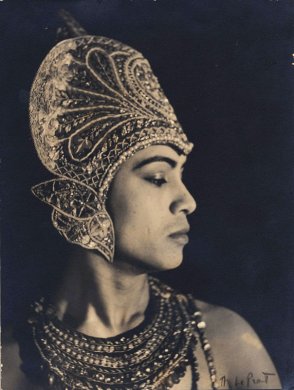
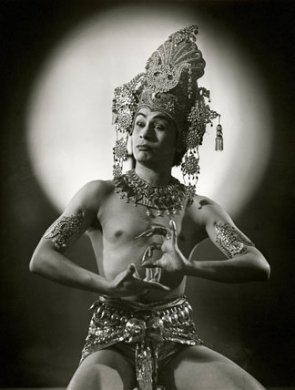
It so happened that when Ram Gopal was visiting New Delhi, I used to meet him often. In 1983 during his visit to New Dehi we both stayed with one lady by name Mati at her residence in Bengali Market. She seemed to have known Ram Gopal's father as a lawyer. Ram was much impressed and during his other visits started staying with her. In 1983, I requested Ram Gopal to give an interview for Sangeet Natak Akademi. He readily agreed and we spoke for more than an hour. That precious recording gives account, in Ram Gopal's own words, his early career as a dancer. Normally SNA does not give excerpts to scholars, researchers for more than two and half minutes. By my good luck, the present Chairman Sekhar Sen very kindly gave me permission to screen the interview for more than 30 minutes. We could screen it followed by the screening of 'I saw God dance.' Ram Gopal has written his own autobiography till the year 1956 when he appeared at Royal Festival Hall on South Bank in London with his large scale production Taj Mahal. When we met in Mumbai in 1968 through his former partner Satyavati, I had interviewed him for The Times of India. He asked me if I could write his biography. I was to leave for London on a British Council Fellowship for visiting ballet schools and meeting scholars and critics. So we planned to work out details when Ram Gopal would return to London and I could meet him. Ram Gopal came to India again in 1973 for shooting of Kerala Kalamandalam where he had studied Kathakali. He invited me to join him and Madame Claude La Morris who was making the film on Ram Gopal. It was to be made by her husband La Morris, but unfortunately he died in an accident. Therefore his wife, also a film maker, decided to undertake that project. We travelled extensively in India and in Kerala. I took them to Palakkad, where the great Kathakali guru Kunju Kurup was staying. It was a historic meeting and Kunju Kurup was delighted to meet him after so many years and held Ram's hand and blessed him. We visited Kerala Kalamandalam where we met Vazhenkada Kunju Nair, another great Kathakali exponent. The film has captured those moments. Claude has also filmed Ram Gopal's 'The Golden Eagle' dance in which Ram used to wear wings of leather covered with real gold and perform the flight of the bird in a mesmerizing manner. Inspired by the role of swan in Kathakali, Ram's improvisation was amazing. The early 'Dance of Shiva' filmed in 1948 shows Ram Gopal in his full glory. Bejewelled, wearing large crowns and ornaments and dancing with bare body, he looks like a god. Very handsome, son of a Rajput father and a Burmese beauty, Ram Gopal had a stunning personality. Next to Uday Shankar, he was the first male dancer to introduce classical Bharatanatyam to the West. His life is like a novel. 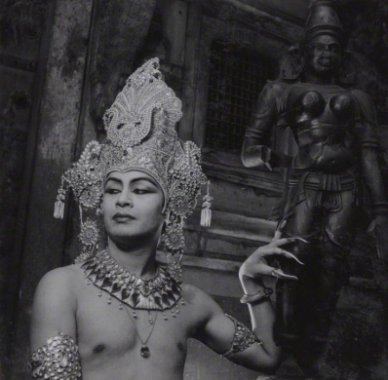
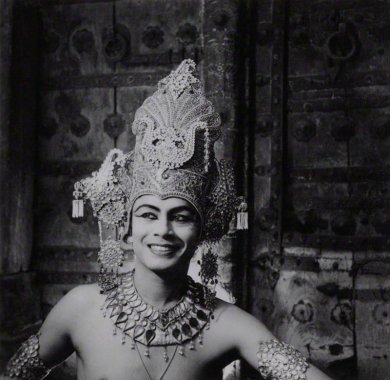
Born on 20th November 1912, he was named Bissano and was known in early years as Bissanobar. That was coined from his date of birth and year, 20th meaning Bis, November, bissano and bar meaning 1912. But in later years he did not like anyone to mention his date of birth. He was narcissistic and wanted to project himself as a young dancer all the time. I did spend a lot of time with him in London going through his archival material - photos, letters, brochures, program books, costumes, collection of paintings, books and rare objects at his Norbury residence. I also stayed with him in Venice where he had moved for two years and he has given detailed interview to BBC on his exotic life. Our project of writing his biography did not work out. He did not want me to mention his date of birth and many other facts of his life. I realized that if I did a biography on Ram Gopal with incorrect facts, I would lose my reputation as a dance historian. So that project remained incomplete. On hind sight one realizes that dancers like Ram Gopal and Uday Shankar turn into legendary figures and remain like that in public mind. One can only remain grateful for the service they have done to Indian dance placing it on the world map. Like Uday Shankar, who was discovered by Russian ballerina Anna Pavlova, Ram Gopal was also in a sense discovered by American dancer La Meri, who on her visit to India and Bangalore inquired about a handsome young dancer whom she could take with her troupe to present Indian dance. She had studied Bharatanatyam under a Devadasi and in her solos of various dance forms of different countries, used to perform it. She auditioned Ram Gopal who readily joined her troupe to travel with her to Far East and Japan. We were told that the press gave Ram excellent coverage, so La Meri dropped him in Tokyo and left for her other engagements. Ram was dejected and did not want to return home in shame. A Polish impresario took him under his wings and via San Francisco, they went to America where Ram met many organizers who were impressed by his personality and offered him engagements. But in order to present authentic dances, Ram returned to Bangalore and went to Pandanallur village to learn Bharatanatyam under the great Guru Meenakshisundaram Pillai. He studied under the guru rigorously. Later on he went to Kerala Kalamandalam and studied under Guru Kunju Kurup. In Bangalore, he studied Kathak under Sohanlal. Thus, well equipped in sound technique, he went to London and performed there in big theatres like Aldwych where the legendary Russian dancer Nijinsky had come to see his dance. As a matter of fact the Polish friend Janta used to call him Indian Nijinsky. 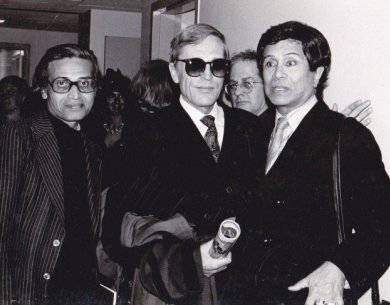 Sunil Kothari with Ram Gopal at Toronto in 1981 conference. Other dancer is Eric Brunn who taught legendary dancer Nureyev. Photo: Abdulla Khandwani ; From Sunil Kothari Dance Collection 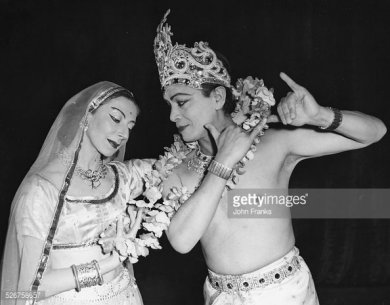 With British ballerina recreating dance of Radha and Krishna as a tribute to Uday Shankar who had performed duet with Anna Pavlova 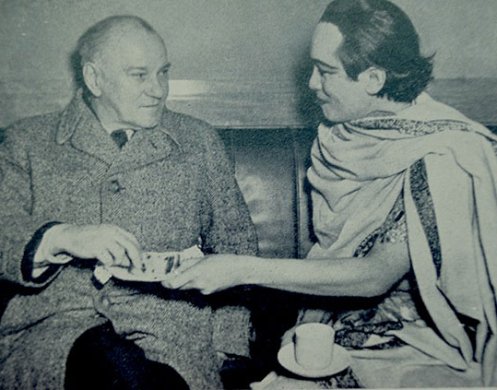 Russian dancer Nijinsky with Ram Gopal 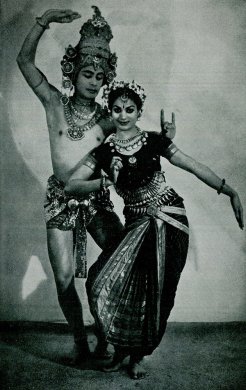 Ram Gopal and Tara Chowdhary Ram toured in USA winning laurels for his dance. His presentation was thoroughly professional and of highest standard. Lighting, costumes, ornaments, crowns, and his attractive personality and excellent performances drew crowds. His international tours brought him fame. Returning to Bangalore he formed his own company and for some time enlisted female dancers like Mrinalini Sarabhai, Tara Chowdhary and later on Shevanti and Kumudini Lakhia. His tours abroad were successful and later on he decided to settle down in London where he had a very loyal following. For some time, he ran a school to teach classical Bharatanatyam. When he was travelling in Europe and America, he was offered roles in Hollywood films like Purple Plain with Gregory Peck and in Elephant Walk, he appears in one scene with Elizabeth Taylor in a setting of Sri Lanka where he had arranged Kandyan dance for the American visitors. Some of these films are now lost but some excerpts are found in film archives. In his twilight years, Ram wanted to settle down in Bangalore. But it was not practical. Therefore he went back to London and was taken care of by his friends and placed in Norbury Old Age Home. Mrs Claude La Morris and others looked after him. I saw him last in 2000 during my visit to London. He was full of enthusiasm in spite of his advancing age and of course looked frail. He treated me with affection and encouraged me to write books. He had most of my books and knew Dr. Mulk Raj Anand and his wife Shirin Vajifdar well. He was honoured by Sangeet Natak Akademi with Fellowship and British Government honoured him with Order of the British Empire. He passed away on 12th October 2003 in London. His estate is being looked after by Pam Cullen, a former officer in Indian High Commission. Some of his collections are donated to Victoria and Albert Museum. As often happens, public memory is short. Dancers like him live through their biographies and film records. Ramli Ibrahim had met Ram Gopal in 1980. Ram had given him his biography with autograph blessing him. Ramli resembled Ram and Ram used to say that if a film was made on him, he would select Ramli to play role of young Ram Gopal. They were great friends. After the screening and my talk, few questions were asked. Why was it that artists like him are forgotten? Why is there little archival material? Why are the Government agencies so indifferent in maintaining archival material? Bharatanatyam has changed a lot. With advent of Rukmini Devi, Bharatanatyam received a big boost. But why was shringara given less importance? What happens to legacy of Devadasis? Why has Bharatanatyam been so sanitized? Historically during revival of Bharatanatyam when Rukmini Devi established Kalakshetra in 1936, it was important to eschew the erotic sentiment and padams performed by Devadasis, to remove stigma attached to dance and emphasis was laid on spiritual aspect of dance.Today dancers do select padams with erotic sentiment to the fore. But the purpose is not to titillate audiences, but through dance raise the feeling of higher consciousness. It all depends upon the performer and what is his/her preference. Regarding indifferent attitude of Government agencies for maintaining archival material, awareness has to be created by the artists and the media. Ram Gopal gives an exhibition of Hindu dancing at Victoria and Albert Museum, London, in 1947  Dr. Sunil Kothari is a dance historian, scholar, author and critic, Padma Shri awardee and fellow, Sangeet Natak Akademi. Dance Critics' Association, New York, has honoured him with Lifetime Achievement award. Post your comments Please provide your name and email id when you use the Anonymous profile in the blog to post a comment. All appropriate comments posted with name & email id in the blog will also be featured in the site. |